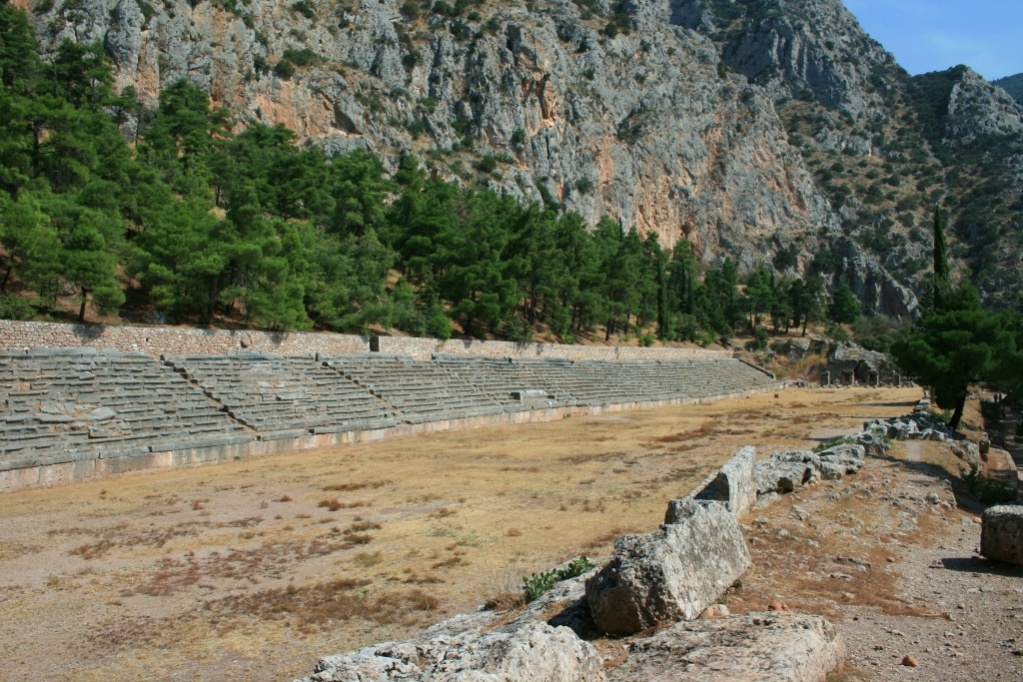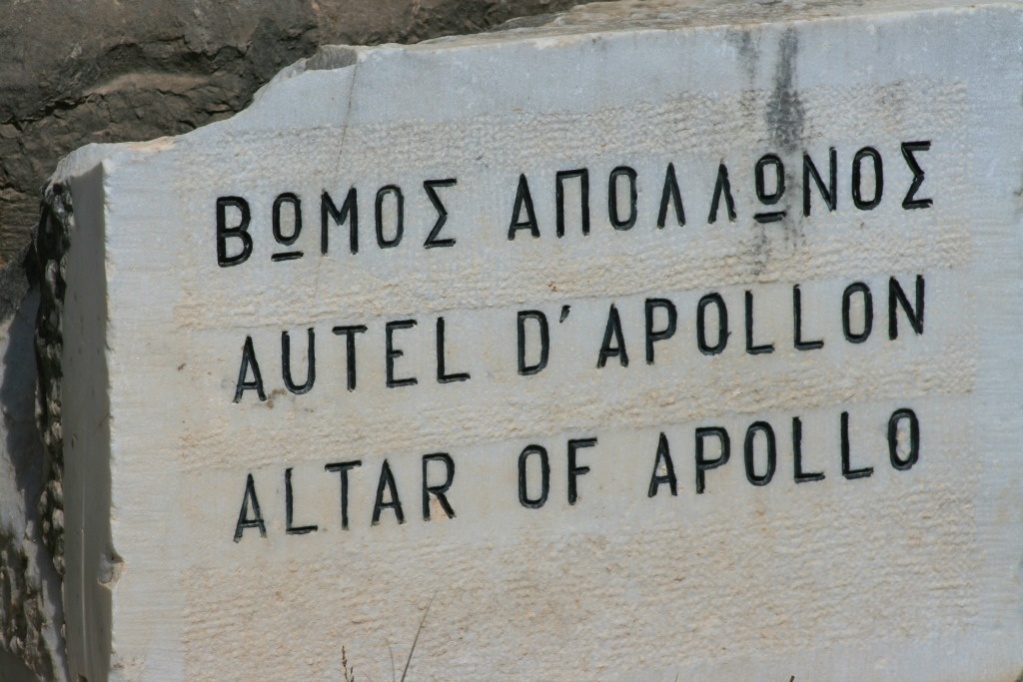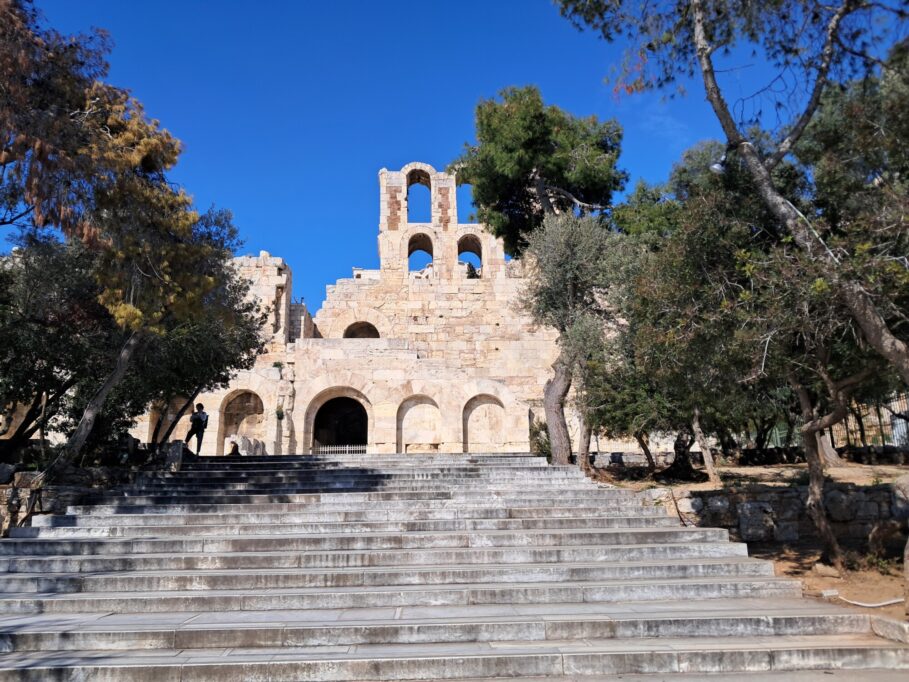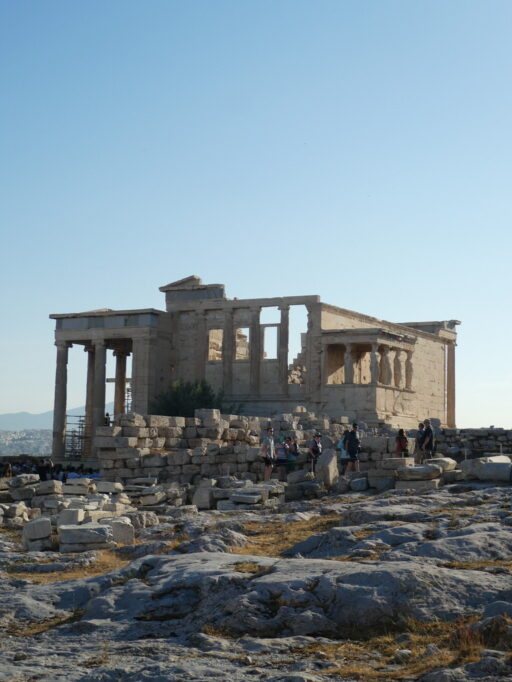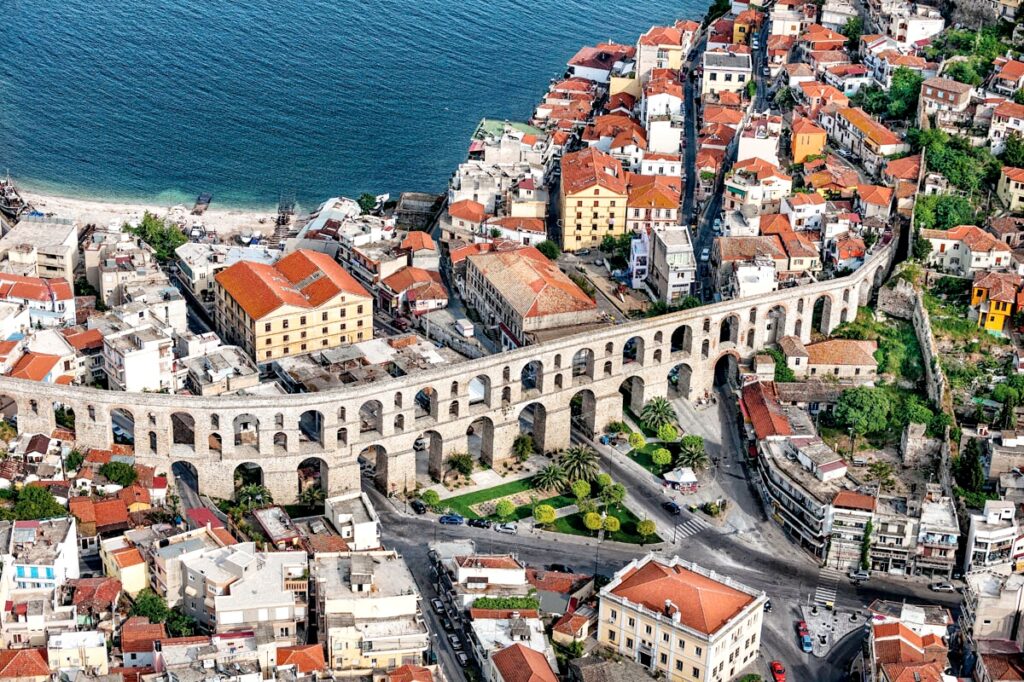Delphi Greece Travel Guide A Vagabond Life
Delphi, Greece: The Ancient Sanctuary of Oracle and Myth
Delphi Greece Travel Guide: Explore ancient ruins, the Oracle of Delphi, breathtaking views, and rich history. Your ultimate guide to visiting Delphi, Greece.Amidst the rugged terrain of Mount Parnassus, Delphi, Greece, is a place where history and mythology intertwine, creating an aura of mystique and reverence. In antiquity, Delphi was considered the center of the world, a sacred sanctuary dedicated to Apollo, the god of prophecy, music, and the arts. Pilgrims from across the Mediterranean traveled here to consult the famed Oracle of Delphi, a priestess known as the Pythia, who delivered cryptic prophecies inspired by the gods. Delphi’s reputation as a place of divine guidance and wisdom attracted philosophers, statesmen, and travelers seeking answers to life’s profound questions.
The archaeological site of Delphi, now a UNESCO World Heritage site, preserves the remnants of this ancient sanctuary. Among its most iconic structures are the Temple of Apollo and the Theater, where the Pythian Games, precursors to the Olympics, were held. The nearby Delphi Archaeological Museum houses a remarkable collection of artifacts, including the exquisite Charioteer of Delphi, offering visitors a vivid glimpse into the grandeur of ancient Greece. As you explore Delphi’s sacred precincts and gaze out at the breathtaking landscape, you’ll be transported back in time to an era where myth and reality converged in this hallowed place of wisdom and divination.
Delphi Greece Map: Delphi Greece Travel Guide
Getting To Delphi Greece: Delphi Greece Travel Guide
Getting to Delphi, Greece by Car
Athens to Delphi (Approximately 2.5-3 hours):
Start your journey in Athens, Greece.
Drive west on the E65/A1 highway towards Lamia.
Continue on the E65/A1, passing through toll booths.
After approximately 2.5-3 hours of driving, you’ll reach the town of Livadia. From there, follow signs to Delphi. The road to Delphi is scenic but can be winding, so drive carefully.
Thessaloniki to Delphi (Approximately 3.5-4 hours):
Begin in Thessaloniki, Greece.
Take the A1 highway southbound toward Larissa.
Continue on the A1 until you reach Lamia.
From Lamia, follow signs for Delphi.
Getting to Delphi, Greece by Bus:
Athens to Delphi by Bus
You can take a KTEL intercity bus from Athens to Delphi. Buses depart from the Liossion Bus Terminal in Athens.
The journey takes approximately 3.5-4 hours, depending on traffic and stops.
The bus route is quite scenic, offering picturesque views of the Greek countryside.
Thessaloniki to Delphi by Bus:
If you’re starting from Thessaloniki, you can take a KTEL intercity bus to Delphi.
Buses leave from the Thessaloniki KTEL Bus Terminal.
The journey can take around 4.5-5.5 hours.
Please note that bus schedules may vary depending on the season, so it’s advisable to check the latest timetables and ticket availability in advance. Once you arrive in Delphi, you’ll be greeted by its ancient ruins, stunning landscape, and the opportunity to explore this historical and mythological site at your own pace.
Getting Around Delphi Greece: Delphi Greece Travel Guide
Delphi offers a mix of walking paths and public transportation to explore its sites. The town’s compact size makes it ideal for exploring on foot, allowing visitors to immerse themselves in the rich history and stunning scenery at their own pace.
The heart of Delphi is home to the ancient ruins, including the famous Temple of Apollo, the ancient theater, and the stadium, all within walking distance of each other. The town’s main street, which runs parallel to the archaeological site, is lined with shops, restaurants, and hotels, making it convenient to stroll between attractions and amenities.
For those who wish to explore the surrounding areas, local buses provide a reliable and affordable option. The regional bus service, KTEL, operates routes that connect Delphi with nearby towns such as Arachova, a charming mountain village known for its traditional architecture and skiing in winter, and Itea, a coastal town with beautiful views of the Gulf of Corinth. Buses also run to and from major cities like Athens, making day trips possible.
Taxis are available for those who prefer a more direct mode of transport. While walking is the best way to experience Delphi’s ancient wonders, taxis can be useful for visiting nearby sites or for travelers with limited mobility. Additionally, renting a car gives visitors the freedom to explore the scenic countryside and visit the surrounding villages at their own pace.
Overall, getting around Delphi is straightforward, with most attractions within easy reach and a range of transportation options available for exploring further afield. Whether on foot, by bus, or by car, Delphi’s historical and natural beauty is easily accessible, ensuring a memorable visit.
Things To See & Do In Delphi Greece Delphi Greece Travel Guide
The Sanctuary of Athena Pronea and Tholos - Delphi Greece
Nestled within the sacred precincts of Delphi, Greece, the Sanctuary of Athena Pronaia stands as a testament to the profound reverence of the ancient Greeks for their deities. This hallowed site, dedicated to Athena Pronaia, the goddess of wisdom and protector of the city, features a remarkable architectural marvel known as the Tholos. The Tholos, a perfectly preserved circular structure with elegant Doric columns, has long intrigued archaeologists and visitors alike with its enigmatic purpose. While its exact function remains a subject of scholarly debate, it is believed to have held religious significance, possibly serving as a treasury or a place of worship.
Surrounded by a tranquil forest of pine and cypress trees, the Sanctuary of Athena Pronaia invites modern travelers to wander through the echoes of the past, exploring the intimate connection between spirituality and nature that was integral to ancient Greek life. As you stand amidst the graceful columns of the Tholos and gaze upon the serene beauty of the sanctuary, you’ll be transported back in time, pondering the mysteries and spiritual devotion that once thrived within these sacred grounds.
Apollos Temple - Delphi Greece
The Temple of Apollo in Delphi, Greece, represents the heart of this historic sanctuary, where ancient Greeks sought answers to life’s profound questions. Dedicated to Apollo, the god of prophecy, music, and the arts, this magnificent Doric temple stood as a symbol of divine connection and human aspiration. Perched on the slopes of Mount Parnassus, the temple’s grandeur and location were believed to bridge the gap between the earthly and divine realms. Pilgrims and philosophers from across the Mediterranean flocked here to consult the Oracle of Delphi, a priestess named the Pythia, who, in a trance-like state, delivered cryptic prophecies believed to be inspired by Apollo himself.
The Temple of Apollo, with its stately columns and commanding presence, not only served as a place of worship but also as a cultural and intellectual center in ancient Greece. Today, as visitors explore its historic ruins and imagine the profound rituals and consultations that once took place within its walls, the temple continues to evoke a sense of wonder and reverence for the enduring legacy of Delphi as a beacon of ancient wisdom and spiritual insight.
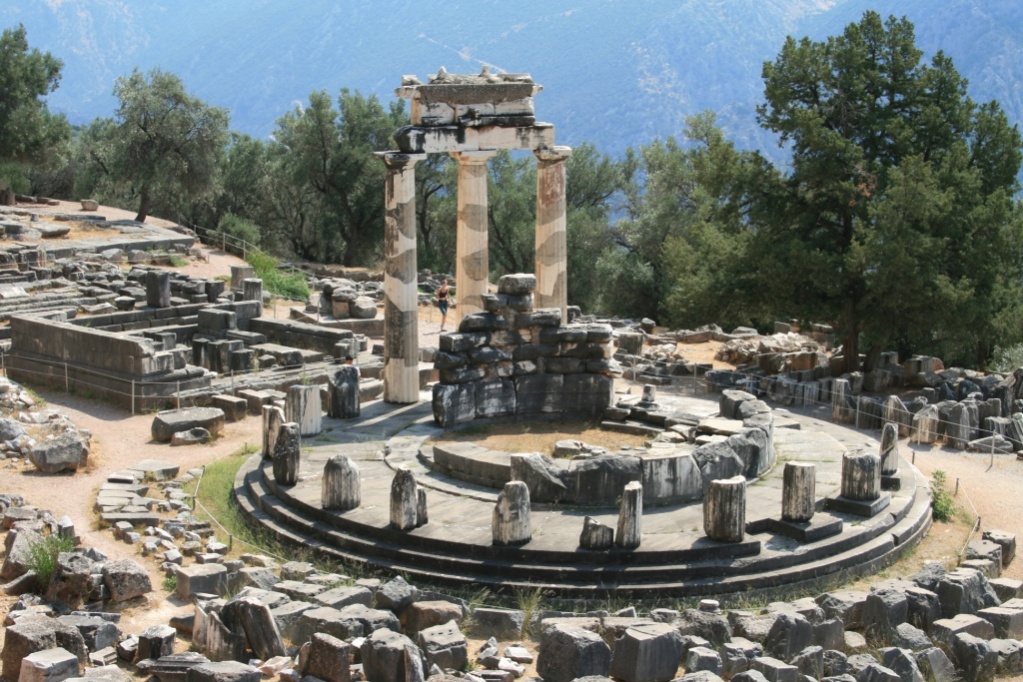
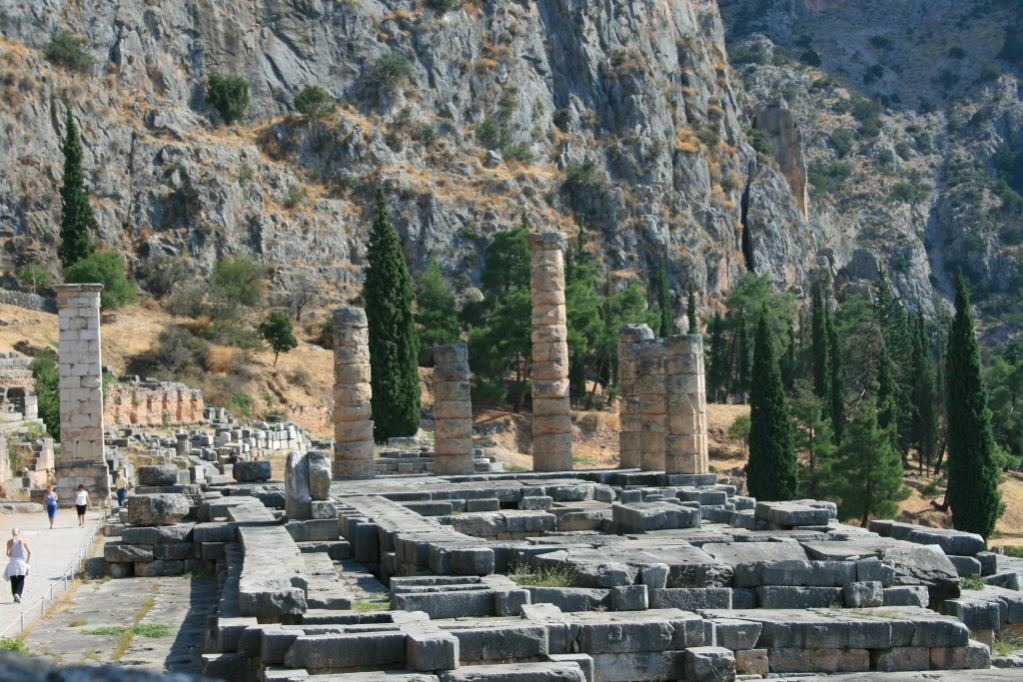
The Sacred Way - Delphi Greece
The Sacred Way in Delphi, Greece, is a historic thoroughfare that carries visitors on a journey through time and spirituality. This ancient stone-paved pathway served as the main route leading from the city of Delphi to the sacred precincts where the Temple of Apollo and the Oracle of Delphi resided. Lined with treasuries, monuments, and statues donated by various Greek city-states and individuals, the Sacred Way bore witness to the profound reverence and devotion of pilgrims who made their way to consult the Oracle and seek guidance from the gods.
Walking the Sacred Way today, visitors can trace the footsteps of those who came seeking wisdom, as they pass by remnants of ancient dedications and imagine the grand processions and rituals that once animated this sacred route. As the pathway gently ascends towards the Temple of Apollo, it invites contemplation and reflection, offering a poignant connection to the deep spiritual significance that has drawn seekers to Delphi for millennia.
Polygonal Wall - Delphi Greece
The Polygonal Wall in Delphi stands as a remarkable testament to the architectural prowess of ancient Greece. Constructed with meticulously cut polygonal stones, this ancient retaining wall is a true marvel of precision craftsmanship. Serving both as a functional element to support the terrace upon which the Temple of Apollo and other sacred structures stood and as a stunning work of artistry, the Polygonal Wall captivates visitors with its geometric precision and the enigmatic beauty of its interlocking stones. It is a tangible link to Delphi’s rich history, whispering secrets of the skilled artisans who designed and built it. As one stands before this ancient stone masterpiece, a sense of wonder and reverence for the ingenuity of the past pervades, offering a deeper appreciation for the enduring legacy of Delphi as a center of both spirituality and architectural excellence.
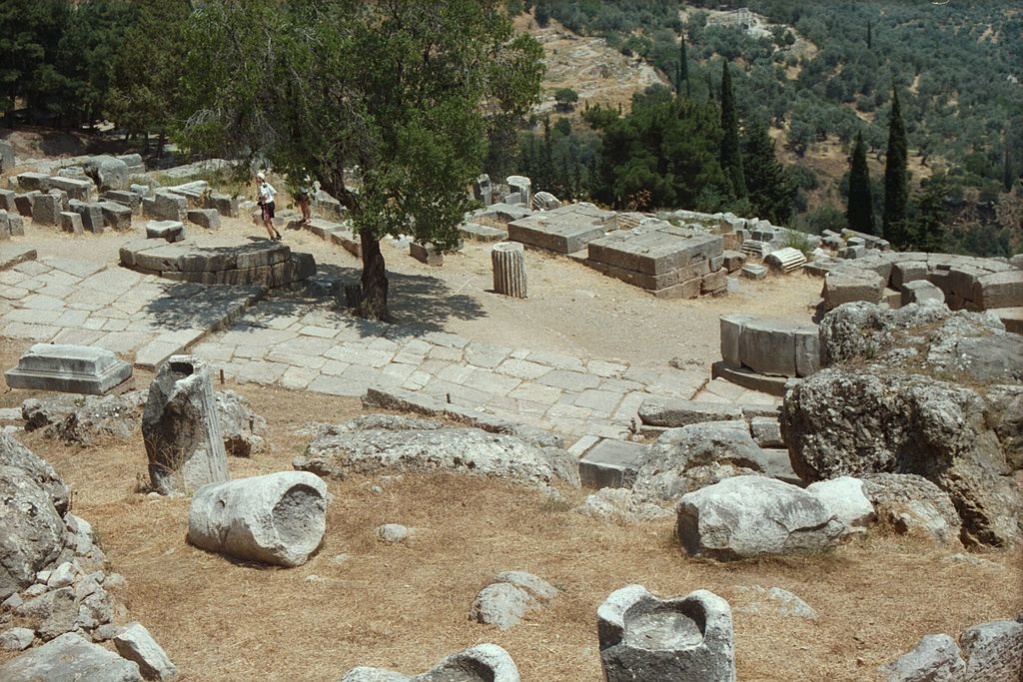
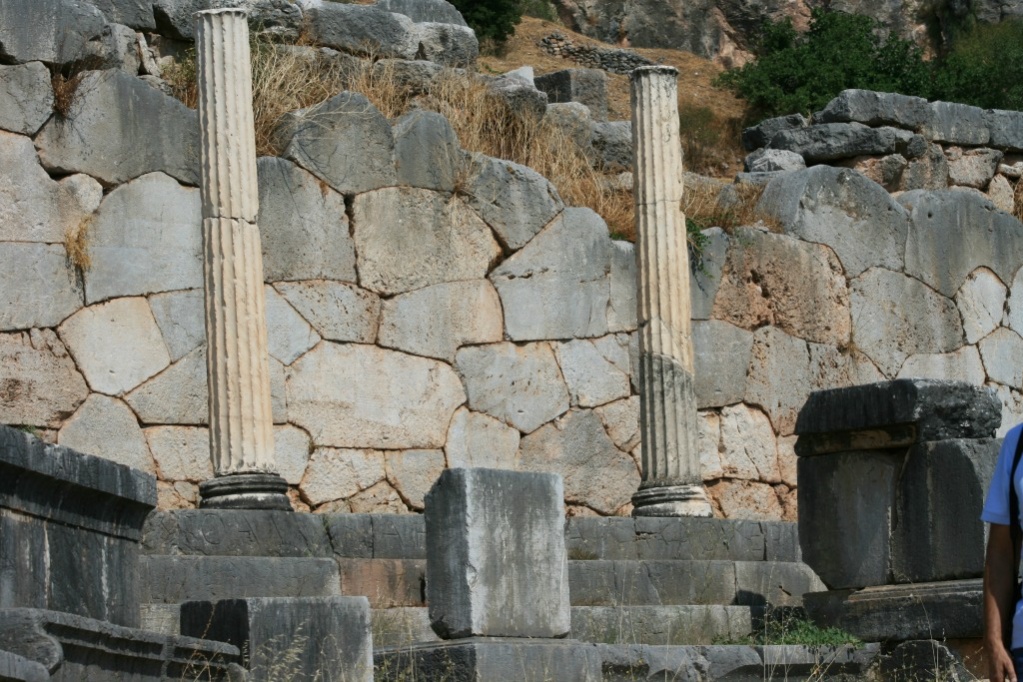
Athenian Treasury - Delphi Greece
The Athenian Treasury in Delphi is a testament to the ancient Greeks’ reverence for their gods and their commitment to showcasing their city’s wealth and influence. Erected between 510 and 480 BCE, this magnificent building served as a treasury for Athens, housing offerings and dedications to Apollo, the god of prophecy and the arts. The Athenians, in gratitude for their victories at the Battle of Marathon and other achievements, adorned the treasury with intricate sculptures and reliefs depicting scenes from their mythology and history. Notably, the metopes on the east side of the treasury portray the legendary deeds of Heracles, reflecting the city’s association with this mythical hero.
Today, the Athenian Treasury, though partially reconstructed, stands as a testament to the artistic and architectural achievements of ancient Athens. As visitors explore its surviving fragments and marvel at the intricate carvings that adorn its exterior, they gain insight into the profound civic pride and religious devotion that characterized Athenian society in antiquity. The treasury’s enduring presence in Delphi continues to inspire awe and admiration for the enduring legacy of ancient Greece and its profound connection to the divine.
Delphi Amphitheatre - Delphi Greece
The Delphi Amphitheatre, also known as the Delphic Theater, is an iconic ancient Greek theatre nestled within the sacred grounds of Delphi, Greece. Carved into the natural slope of Mount Parnassus, this open-air theatre offers a breathtaking panoramic view of the surrounding landscape, including the Temple of Apollo and the valley below. Constructed in the 4th century BCE, the theatre could seat approximately 5,000 spectators and served as a venue for various performances and events, including dramatic plays, poetry recitations, and musical contests during the Pythian Games.
Stepping into the well-preserved ruins of the Delphi Amphitheatre, visitors can sense the echoes of a bygone era where the arts and culture thrived amidst the awe-inspiring backdrop of Delphi’s sacred sanctuary. Its acoustics are still impressive today, allowing one to appreciate the ingenious engineering of the ancient Greeks. The theatre’s historical significance and commanding presence continue to draw travelers from around the world, inviting them to immerse themselves in the rich tapestry of Delphi’s cultural and spiritual heritage.
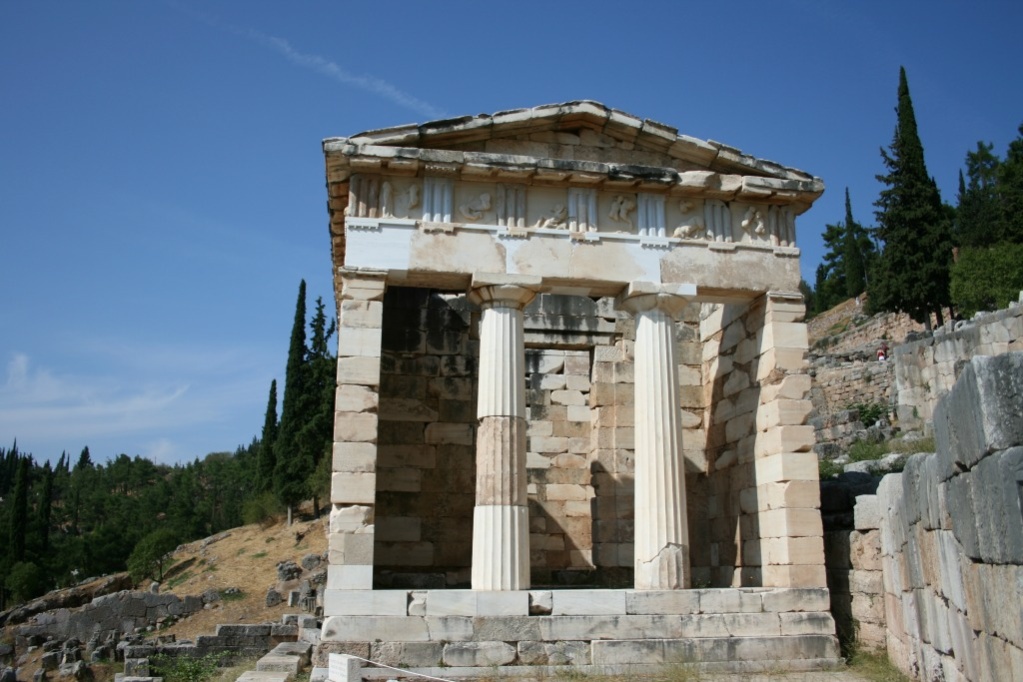
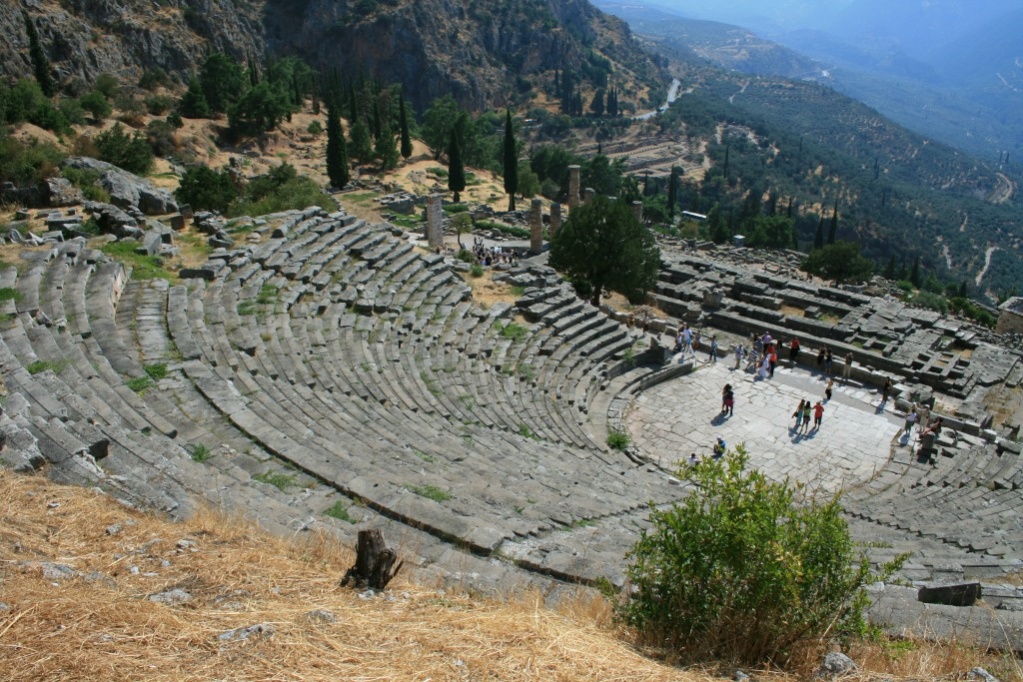
Delphi Stadium - Delphi Greece
The Delphi Stadium, situated within the sacred precincts of Delphi in Greece, stands as a testament to the enduring spirit of competition and athletic prowess in antiquity. Constructed in the 5th century BCE, this ancient stadium showcases a classic Greek horseshoe-shaped design with tiered stone seating, accommodating thousands of spectators. Here, the Pythian Games, one of the ancient world’s most prestigious sporting events, took place. These games featured athletic contests, including foot races, long jumps, and discus throwing, and attracted athletes and spectators from far-flung corners of the Greek world.
As visitors explore the well-preserved ruins of the Delphi Stadium, they can envision the fervor of the athletes and the cheers of the crowd, transcending time to immerse themselves in the sporting legacy of ancient Greece. The stadium’s historical significance and the breathtaking backdrop of Mount Parnassus serve as a poignant reminder of the enduring human pursuit of excellence and the profound cultural heritage that defines Delphi.
The Archaeological Museum of Delphi Greece
Nestled amidst the awe-inspiring landscapes of Delphi, Greece, the Archaeological Museum of Delphi is a veritable treasure trove of artifacts and antiquities that bear witness to the grandeur of the ancient world. This museum, perched on the slopes of Mount Parnassus, houses a remarkable collection of archaeological finds from the Delphi archaeological site and its vicinity. Visitors are greeted by masterpieces of ancient Greek art, including the stunning bronze Charioteer of Delphi, a testament to the skill of ancient sculptors. The museum’s exhibits include statues, ceramics, jewelry, and other relics that span centuries, allowing travelers to immerse themselves in the rich history and cultural heritage of Delphi. As visitors explore this cultural gem, they not only gain insight into the religious and athletic traditions of the ancient Greeks but also discover the enduring allure of Delphi as a center of art, culture, and spiritual significance.
